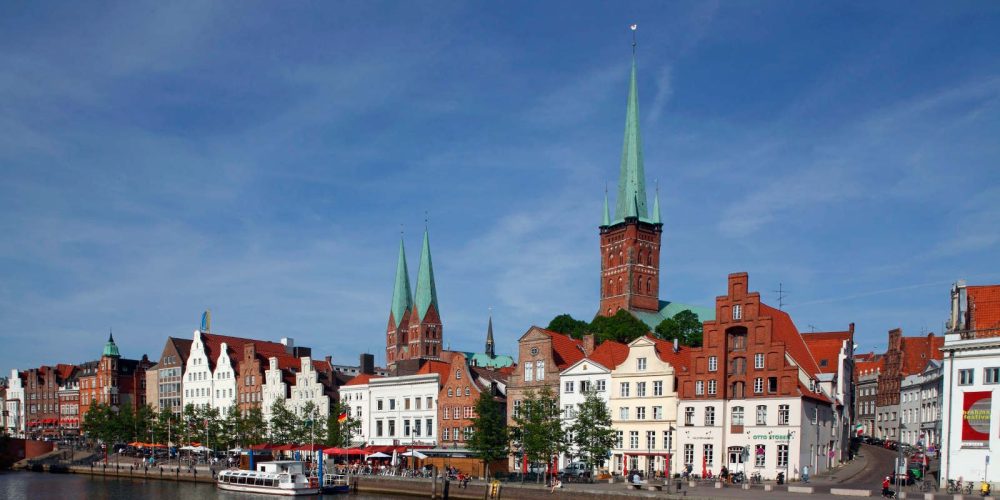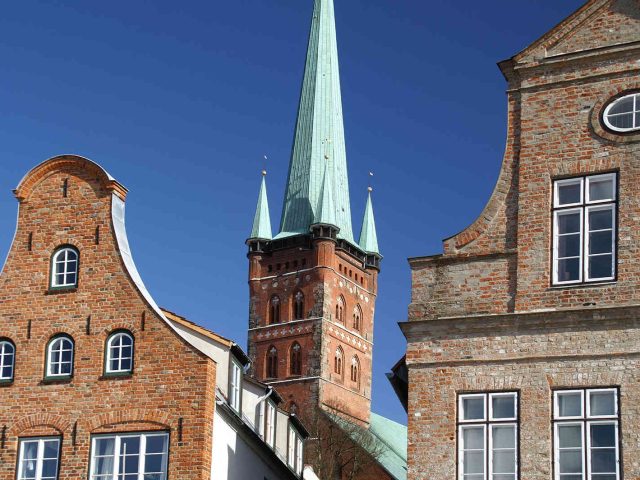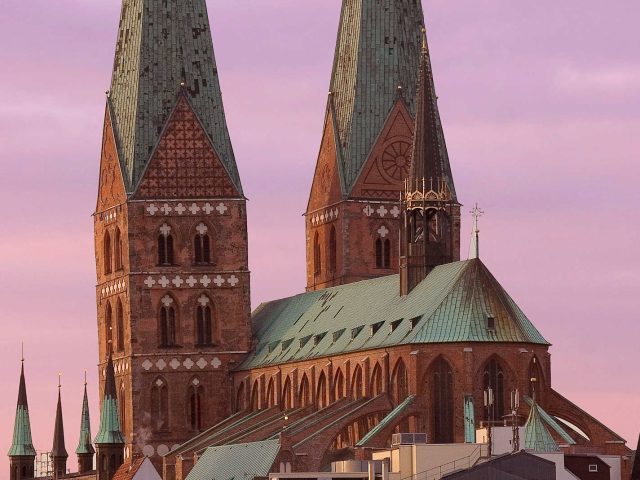Over several centuries, the “Queen of the Hanseatic League” played a leading role, and this is still clearly visible today. The self-confidence, power and wealth of its free citizens and merchants during the Middle Ages are reflected in the Brick Gothic buildings of this Hanseatic city, which became a UNESCO World Heritage Site in 1987. A prime example of this is Lübeck’s historic market square with its famous town hall and the mother church of Brick Gothic, St. Mary’s Church (“St. Marien zu Lübeck”).
There is a long list of Brick Gothic buildings in Lübeck. Each of these buildings has its own history and deserves special appreciation. Of course, there are famed celebrities such as the Holsten Gate or the historic town hall. But there are also magnificent buildings that literally stand out from the city silhouette – most notably the imposing churches. No fewer than seven towers signal that Lübeck was once a great metropolis: St. Mary’s Church (“St. Marien”) with its double tower, St. Peter’s Church (“St. Petri”), the Cathedral (“Dom”), St. James’ Church (“St. Jakobi”) and St. Giles’ Church (“St. Aegidien”).









